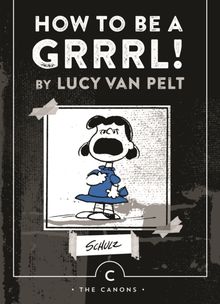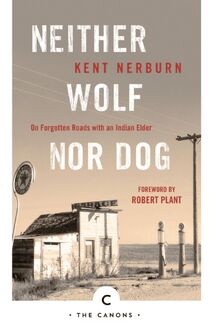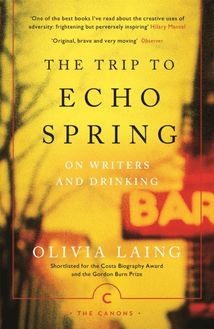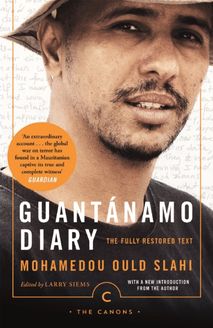Corner , livre ebook
366
pages
English
Ebooks
2009
Vous pourrez modifier la taille du texte de cet ouvrage
Obtenez un accès à la bibliothèque pour le consulter en ligne En savoir plus
Découvre YouScribe en t'inscrivant gratuitement
Découvre YouScribe en t'inscrivant gratuitement
366
pages
English
Ebooks
2009
Vous pourrez modifier la taille du texte de cet ouvrage
Obtenez un accès à la bibliothèque pour le consulter en ligne En savoir plus
Publié par
Date de parution
04 février 2009
Nombre de lectures
1
EAN13
9781847675774
Langue
English
Poids de l'ouvrage
1 Mo
Publié par
Date de parution
04 février 2009
Nombre de lectures
1
EAN13
9781847675774
Langue
English
Poids de l'ouvrage
1 Mo
David Simon is an author, journalist, producer and script writer and is best known as the creator of HBO's Peabody Award-winning series The Wire . His first book, the international bestseller Homicide , won the Edgar Award and the Anthony Award and became the basis for the NBC award-winning drama. His second book, The Corner: A Year in the Life of An Inner-City Neighbourhood , co-authored with Edward Burns, was made into an Emmy-winning HBO miniseries. Simon also co-created the HBO series Generation Kill with Ed Burns, Treme with Eric Overmyer and We Own This City with Ed Burns and George Pelecanos. He lives in Baltimore. Edward Burns served twenty years in the city police department. For much of that time, he worked as a detective in the homicide unit. He has collaborated with David Simon on The Corner , The Wire , Generation Kill , The Plot Against America and We Own This City .
The Canons edition first published in 2022 by Canongate Books First published in Great Britain in 2009 by Canongate Books Ltd, 14 High Street, Edinburgh EH1 1TE
This digital edition first published in 2009 by Canongate Books Ltd canongate.co.uk
Originally published in hardcover in 1997 and in paperback in 1998 by Broadway Books, a division of Bantam Doubleday Dell Publishing Group Inc.,
1540 Broadway, New York, NY 10036
Copyright © 1997 David Simon and Edward Burns Afterword copyright © 2009 David Simon and Edward Burns
The right of David Simon and Edward Burns to be identified as the authors of this work has been asserted by them under the Copyright, Designs and Patents Act 1988
British Library Cataloguing-in-Publication Data A catalogue record for this book is available on request from the British Library
ISBN 978 1 78689 978 1 eISBN 978 1 84767 577 4
Designed by James Sinclair
For my parents, Bernard & Dorothy Simon
For Anna Burns
"You can hold back from the suffering of the world. You have free permission to do so and it is in accordance with your nature. But perhaps this very holding back is the one suffering you could have avoided."
Kafka
M AP L EGEND
= Open-air drug markets in 1993 Numbers in italic type refer to inset Martin Luther King Jr. Recreation Center 1a. MLK center playground The Dew Drop Inn, 1625 Fayette Street (home to Fran, DeAndre, DeRodd in January 1993) 1717 Fayette Street (vacant house, once home to Gary, Fran, and DeAndre) 1806 Fayette Street (Ella Thompson’s apartment) 1827 Vine Street (the McCullough home) 1825 Vine Street (Annie’s house) 1846 Fayette Street (Blue’s house) R.C.’s apartment building St. James Methodist Church St. Martin's Roman Catholic Church Monroe and Fayette (Fat Curt’s corner) Bentalou Recreation Center 2526 Boyd Street (new home for Fran, DeAndre, and DeRodd as of late September 1993) Westside Shopping Center United Iron & Metal Company The scrap yard on McPhail Street Bon Secours Hospital Scoogie’s house Tyreeka’s house in January 1993 (the family's later move to Riggs Avenue puts them twenty blocks north by northwest, off the map) Francis M. Woods Senior High School Franklin Square Park Union Square Park Seapride Crabhouse (one of four In the Pratt and Monroe Street area, known as "Crab Alley") Pops’ shooting gallery Brown’s funeral establishment Fairmount and Gilmore (DeAndre’s winter corner) McHenry and Gilmore (C.M.B.’s summer corner) Mt. Clare Shopping Center
CONTENTS
Winter
Spring
Summer
Fall
Authors’ Note
Afterword
WINTER
ONE
Fat Curt is on the corner.
He leans hard into his aluminum hospital cane, bent to this ancient business of survival. His fattened, needle-scarred hands will never again see the deep bottom of a trouser pocket; his forearms are swollen leather; his bloated legs mass up from the concrete. But then obese limbs converge on a withered torso: At the heart of the man, Fat Curt is fat no more.
"Yo, Curt."
Turning slightly, Curt watches Junie glide over from the other side of Fayette, heading into Blue’s for the evening’s last shot. Curt stops, a few feet from Blue’s door, and here’s Mr. Blue himself, standing on the front steps of what was once his mother’s pristine rowhome, scratching at the edges of his beard between arrivals, pocketing two bills from each, though it’s two more if you need a fresh tool. No charge, of course, for share and share alike.
From down the hill near Gilmor comes a short string of gunshots too even, too deliberate for firecrackers. Barely tensing, Blue allows Junie to edge past him on the marble steps. A regular: no charge for Junie.
"They shootin’ already," says Blue.
Curt grunts. "Motherfuckers can’t tell no time."
Blue smiles softly, then turns to follow Junie inside.
Fat Curt slips slowly toward Monroe, reddened eyes tracking a white boy who pulls to the curb in a battered pickup. But there’s no play here; one of Gee Money’s younger touts has already laid hands on the sale.
Curt works his way around the corner to Vine, passing Bryan, who nods acknowledgment. No sale here, either; not with Bryan Sampson out here working his own tired hustle, selling that baking soda. Curt shakes his head: Bryan looking to get his ass shot up again behind that Arm & Hammer shit.
From down the hill, from somewhere around Hollins and Payson this time, comes more crackling syncopation the beginning of the deluge to come, though it isn’t quite eleven yet. Curt shrugs it off and shuffles back toward Fayette. Time enough left, he knows, to make a little money.
"Wassup?"
Finally, a face he knows from down on Mount Street, a gaunt dark-skinned fiend, scurrying up the hill in the hope of catching a better product. Coming right at Curt.
"Wassup now?"
Curt growls assent. Shop’s open.
"Somethin’ good?"
Fat Curt, the oracle. Twenty-five years in service on these streets, and everyone knows there’s no better tout at the corner where Fayette meets Monroe. Curtis Davis is the gravel-voiced purveyor of credible information, a steadfast believer in quality control and consumer advocacy. No bullshit, no burn bags, no watered-down B-and-Q garbage. Fat Curt, a tout among touts.
"Might try ’round the way," he says, turning and gesturing with his cane toward the entrance to Vine Street.
The fiend takes his hunger down the block as Curt gives a confirming nod to the lookout at the mouth of the alley. Slowly, the aging tout canes his way back to the corner, shuffling beneath the jaundiced glare of sodium vapor. The city has put stage lighting out here; it’s harsh and direct, openly contemptuous of the scene itself. Fat Curt is forever exposed in the ugly glow, but he can remember when dull blue light washed more gently over these deeds, a time when the neighborhood was permitted some small privacy. Now, at an hour to midnight, the corner is visible at a full block’s distance. Dope and coke. Coke and dope. Twenty-four, seven: twenty-four hours a day, seven days a week.
More gunshots. Fulton and Lex by the sound of it. But Curt is still on post, waiting for the next sale, when the Western uniforms roll up for a last pass at the corner. The radio cars move slowly down Monroe, but it’s not a jump-out this time, just the ceremonial eyefuck and a sullen showing of the colors.
From down near Hollins and Payson again comes a long, staccato string. Ten or twelve in a row and nine millimeter by the report. But the police ignore it, their faces instead scanning the foot traffic, their brake lights showing red.
The lookouts raise up and go. The touts, customers, and runners stream away, evaporating like mist, moving down Fayette and into the back alleys. Fat Curt, too, turns from the police cruisers, stepping cane-to-foot-to-cane so slowly that any movement is more implied than real just enough effort to suggest a polite, territorial retreat. From experience, Curt knows that it will be a short visit, that no right-minded police will be out on these streets fifteen minutes from now.
Over his shoulder, he watches as the brake lights go dark and the cruisers roll quietly through the traffic light, first one car, then its companion heading down Monroe. Curt, having covered barely half the distance to Lexington, turns back again. Shop is still open, but the salvos are now coming seconds apart, hitting all points on the compass. Six in a row echoing from over by the hospital; the snap of a .22 up on Lexington; the roar of what has to be a shotgun from somewhere down on Fairmount.
Time to go, thinks Curt. Time to go before they’re digging some hopper’s bullet from my lonesome black ass. He staggers around the corner and up the steps to Blue’s house, rapping the front door with his cane. Blue cracks the door, then gives way; Curt slips inside. The corner watches its aging wise man; Fat Curt tells them it’s time to go and the last soldiers take heed and drift in behind him. Eggy Daddy and Hungry, then Bryan and Bread and finally Curt’s brother, Dennis, who’s got a hospital cane all his own since he spiked himself in the neck and caught some spine. One by one they cross Blue’s threshold and cluster together amid the cookers and candles and syringes, most of them waiting for Rita to make her rounds. Rita, the corner physician, works a rare magic, finding veins in cold, dying places where no living blood vessel has a right to be.
Outside, the streets are empty. No touts, no runners, no fiends. No police either, as Curt predicted. At a quarter to the hour, all the radio cars are in Western District holes, parked hood-to-trunk behind tall ware-houses and school buildings, or, better still, below something solid.
All across the west side, the distinct reports of individual shots now blend into cacophony. Down Fayette Street toward the harbor, and up Fulton toward the expressway, the bright orange-yellow of muzzle flashes speckles from front steps, windows, and rooftops. They look like fireflies amid the crescendo, beautiful in their way. A windo













